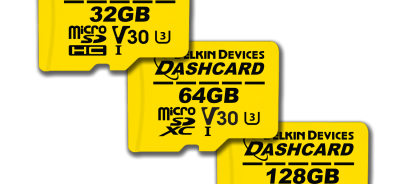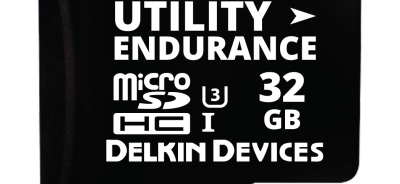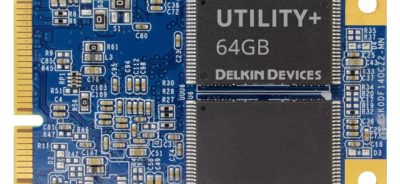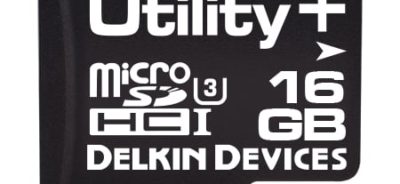What Are the Top Differences Between Industrial Grade and Consumer Grade Flash Storage?
 Perhaps your organization has just decided that a flash storage device is necessary for your new industrial application prototype, or you just need a perfect replacement to the flash storage that’s been used in an industrial host. Whichever the case, there are many flash storage options in the market to choose from, with all of them falling under two general categories – industrial grade flash storage and consumer grade flash storage.
Perhaps your organization has just decided that a flash storage device is necessary for your new industrial application prototype, or you just need a perfect replacement to the flash storage that’s been used in an industrial host. Whichever the case, there are many flash storage options in the market to choose from, with all of them falling under two general categories – industrial grade flash storage and consumer grade flash storage.
However, learning about the differences between these two grades of flash storage devices is necessary to make the right choice for your project. As an Engineer or a Project Manager, it is imperative that the data stored for your application is guarded against any form of loss, and this is where knowing the true difference between consumer and industrial grade flash storage is most important.
So, what exactly are the differences between the industrial grade flash storage device and its consumer counterpart? Here are some of the primary aspects to consider.
FIRMWARE ALGORITHMS
Industrial grade Utility storage devices come with the most intelligent firmware programming such as defect management, error-checking & correction etc. This advanced firmware is designed to increase reliability and to remove the need for a replacement until after an average of 10 years. Great importance is placed on the design and development of firmware algorithms in an industrial storage device.
Due to the competitiveness of the consumer market, which places much pressure on the cost of production, some manufacturers of the consumer grade storage devices would prefer to make use of more simple firmware algorithms, and in many cases, have varying design and intellectual property costs. True industrial grade flash storage means a slightly higher cost of production for enhanced firmware algorithms, but the overall performance can be better suited for the increased read and write cycles that many industrial applications require.
WARRANTY AND SUPPORT
Most reputable industrial grade flash storage manufacturers with a long line of testing and validation provide consumers a reliable warranty, and offer product support for an increased length of time. Typically, such warranties include expedited replacement of the device if any problem arises.
Consumer grade flash storage manufacturers offer a warranty for their products, but it’s important to note that the warranty for industrial grade products often covers additional considerations throughout the product lifecycle. Say the storage card breaks or suffers a loss of data, both industrial and consumer grade cards are covered, avoiding having to trash the card and start all over again with a new one. The warranty and customer support are key considerations when choosing the right storage device manufacturer so you can ensure the success of your application and the integrity of the data it stores.
TYPE OF NAND STORAGE
The type of NAND is another consideration when comparing grades of flash storage. Data retention life, support for heavier write workloads, recovery from a higher BER (Bit Error Rate), as well as a balanced functionality at extreme temperatures and environmental conditions, are all functions of the type of NAND. The type of NAND found in industrial grade flash storage is most often Single Level Cell (SLC) and offers these properties, which are critical to industrial OEM applications.
Consumer grade flash storage devices are most commonly built with a Multi-Level Cell (MLC) NAND which have a different range of endurance cycles you will want to review and be sure will be the right fit for your application. MLC NAND structure is sometimes a little less expensive than SLC, and therefore common in consumer grade flash storage products. MLC and SLC flash storage products have varying data retention longevity, BER, and temperature ranges, so it’s important to match your application requirements with the right kind of NAND architecture.
HANDLING UNEXPECTED POWER INTERRUPTION
Occasionally flash storage devices are faced with the challenge of power loss or surge to the hardware. To make storage devices more cost effective on the consumer side, most manufacturers of consumer grade flash storage provide software-based solutions to power failure or surge events.
Industrial grade flash storage devices, however, are not just protected via software, but are also built to physically resist unexpected destructive power fluctuations, preserving the stored data, as well as the longevity of the hardware.
TEMPERATURE ENDURANCE
Since most industrial grade storage devices are meant to be in constant operation, they are specially designed to withstand temperature rise, which is inevitable after long-term usage. Industrial grade storage devices are also well suited for operation in extreme climates. The general industrial flash temperature range is -40°C to 85°C.
Consumer grade storage devices will perform well in average temperature conditions that electronic devices are exposed to, but have a lower temperature variation tolerance than the industrial grade counterpart.
LOCKED BILL-OF-MATERIALS AND PRODUCT CHANGE NOTIFICATION
Another advantage you get with industrial grade flash storage is the security of a locked Bill of Materials (BOM). This means the materials and part numbers the device is manufactured with will not change in future orders or replacements, unless a product change notification is given. This ensures that the NAND, controller, firmware, and any other listed part number will remain the same for additional or replacement storage devices as they are needed for the industrial application. The customer can be sure the flash storage device does not need to be re-tested or requalified, which saves a lot of time and resources over the duration of the product life cycle.
Consumer grade flash storage devices may or may not come with a locked BOM or a commitment to a product change notification. If these are required for the product lifecycle of your industrial application, then industrial grade flash storage products are a better bet.
COST
Considering the upgraded components of industrial flash storage devices, it makes sense that industrial grade flash storage options have a higher price per unit. Consumer flash storage devices are typically more affordable than the industrial flash storage devices of the same capacity. After all, they are manufactured with different standards of materials and firmware. Both industrial and consumer grade flash storage options have certain benefits, and the best option depends on the nature of its intended use. It is important to consult with the manufacturer to see what their specific recommendations are if you are not sure. It’s a good idea to review the product specification details to be sure the capabilities match your requirements. Also, review the manufacturer policies, such as warranty and lifecycle management support to be sure you have what’s needed to ensure the success of your application and the data it collects.
 Login
Login Register
Register











